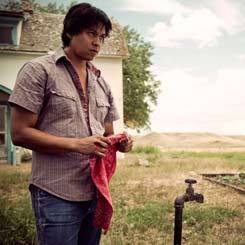By Brett Zongker, Associated Press
WASHINGTON — Just in time for a new movie about the making of “Mary Poppins,” the 1964 Disney classic starring Julie Andrews and Dick Van Dyke has been selected for preservation at the Library of Congress so future generations of Americans can see it.
The library inducted 25 films last week into the National Film Registry to be preserved for their cultural, historical or cinematic significance.
This year’s selections include Quentin Tarantino’s “Pulp Fiction,” the space race film “The Right Stuff,” and Michael Moore’s documentary confronting the auto industry, “Roger and Me.”
Curators said it was a coincidence that they selected “Mary Poppins” just ahead of its 50th anniversary and during the release of the new Disney film “Saving Mr. Banks,” which is about the making of the movie.
Steve Leggett, program coordinator for the library’s National Film Preservation Board, said “Mary Poppins” had been on the short list of picks many times before.
The films chosen this year span from 1919 to 2002 and include Hollywood classics, documentaries, silent films, independent flicks and experimental pictures.
Congress created the program in 1989 to ensure that gems from American movie history are preserved for years to come.
Some are chosen for their influence on movies that would follow, as with “Pulp Fiction” from 1994. The film board called it a milestone for independent cinema, and Leggett noted Tarantino’s “stylized violence and kind of strangeness” in the cinematography.
Older films often become endangered of being lost, said Librarian of Congress James Billington, “so we must protect the nation’s matchless film heritage and cinematic creativity.”
This year’s selections represent the “extreme vitality and diversity of American film heritage,” Leggett said. Many illustrate American culture and society from their times, he said.
The oldest films joining the registry this year are from the silent era. They include 1920’s “Daughter of Dawn,” which featured an all-Native-American cast of Comanche and Kiowa people, with a fictional love story and a record of Native American traditions of the time.
The 1919 silent film “A Virtuous Vamp,” a spoof on workplace romance, made Constance Talmadge an early film star. And “Ella Cinders” from 1926 featured the famous actress Colleen Moore.
Other notable selections this year include the 1956 science-fiction film “Forbidden Planet,” which depicted humans as space travelers to another planet; the popular 1960 western “The Magnificent Seven”; and the 1946 film “Gilda,” which is the first in the registry featuring actress Rita Hayworth.
Also included is the 1966 adaptation of “Who’s Afraid of Virginia Woolf,” starring Elizabeth Taylor and Richard Burton. The movie earned Oscar nominations for them both, a win for Taylor, and launched the screen-directing career of Mike Nichols.
Original prints of even newer movies, such as Michael Moore’s “Roger and Me” from 1989, have become endangered. “The true regret I have is that the cities of Flint and Detroit, which are at the center of my film, are now in much worse shape — as is the American middle class in general,” Moore said.

